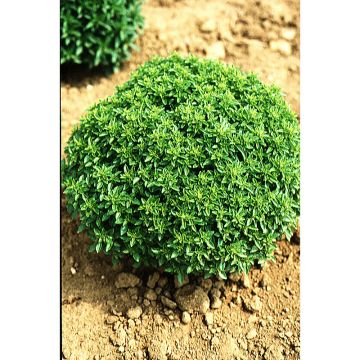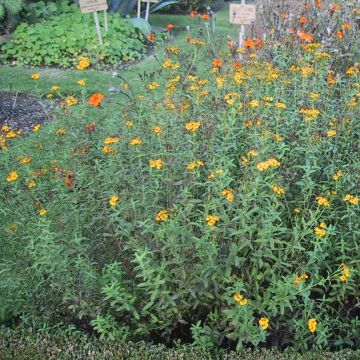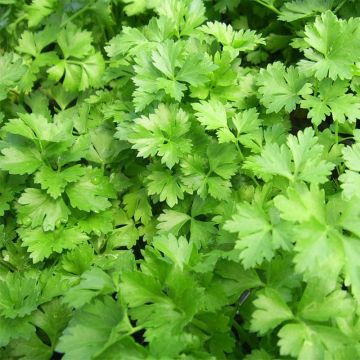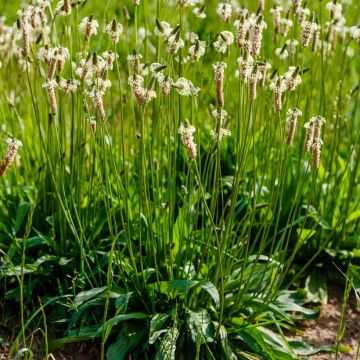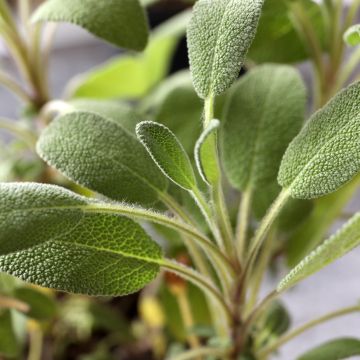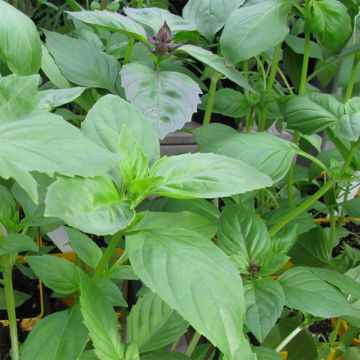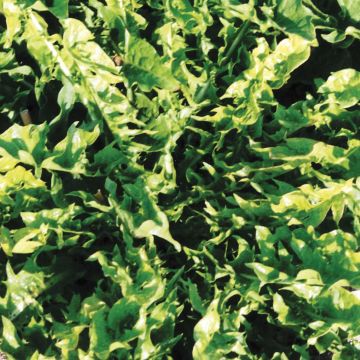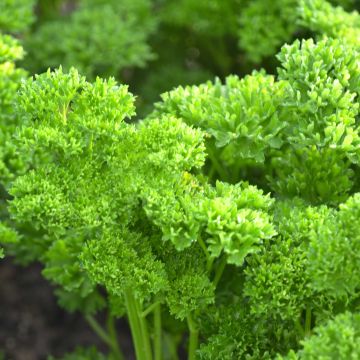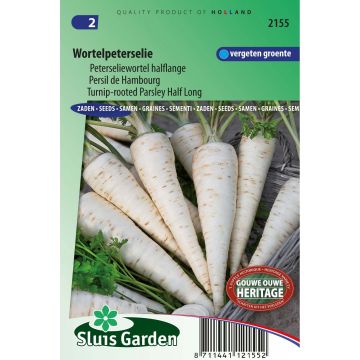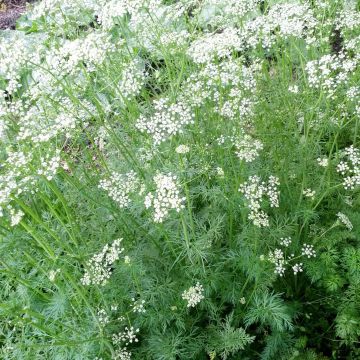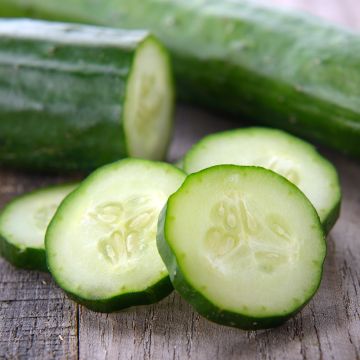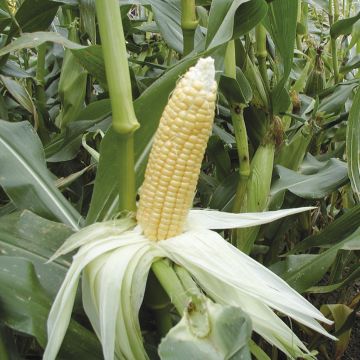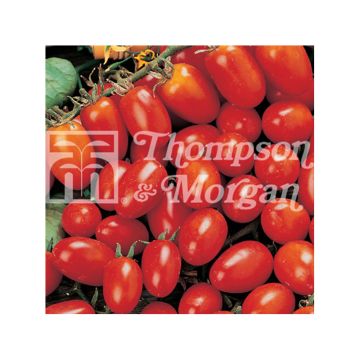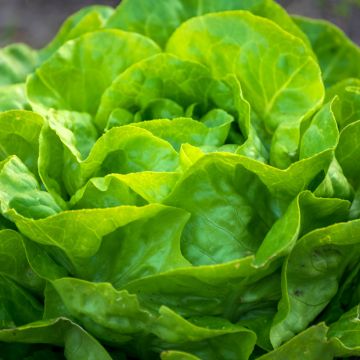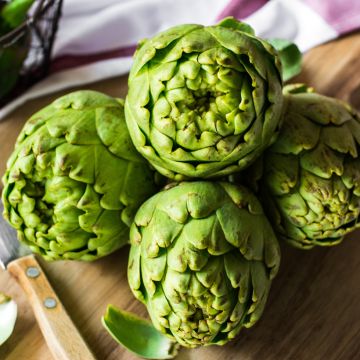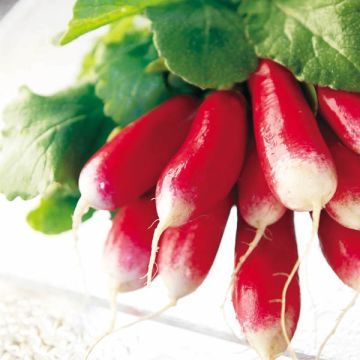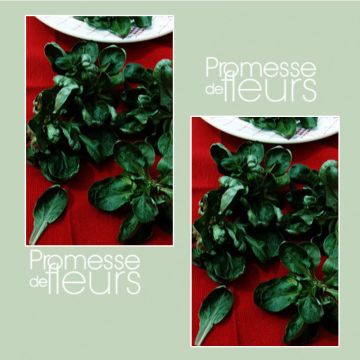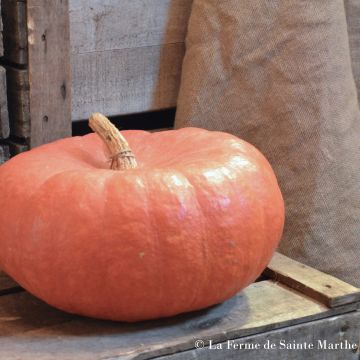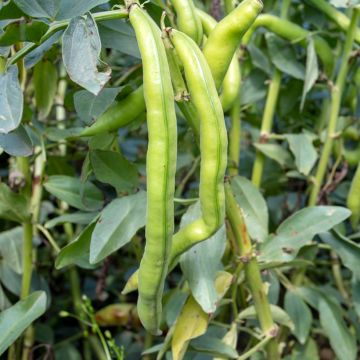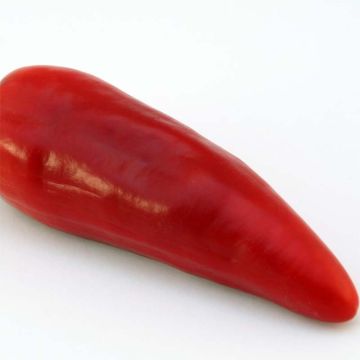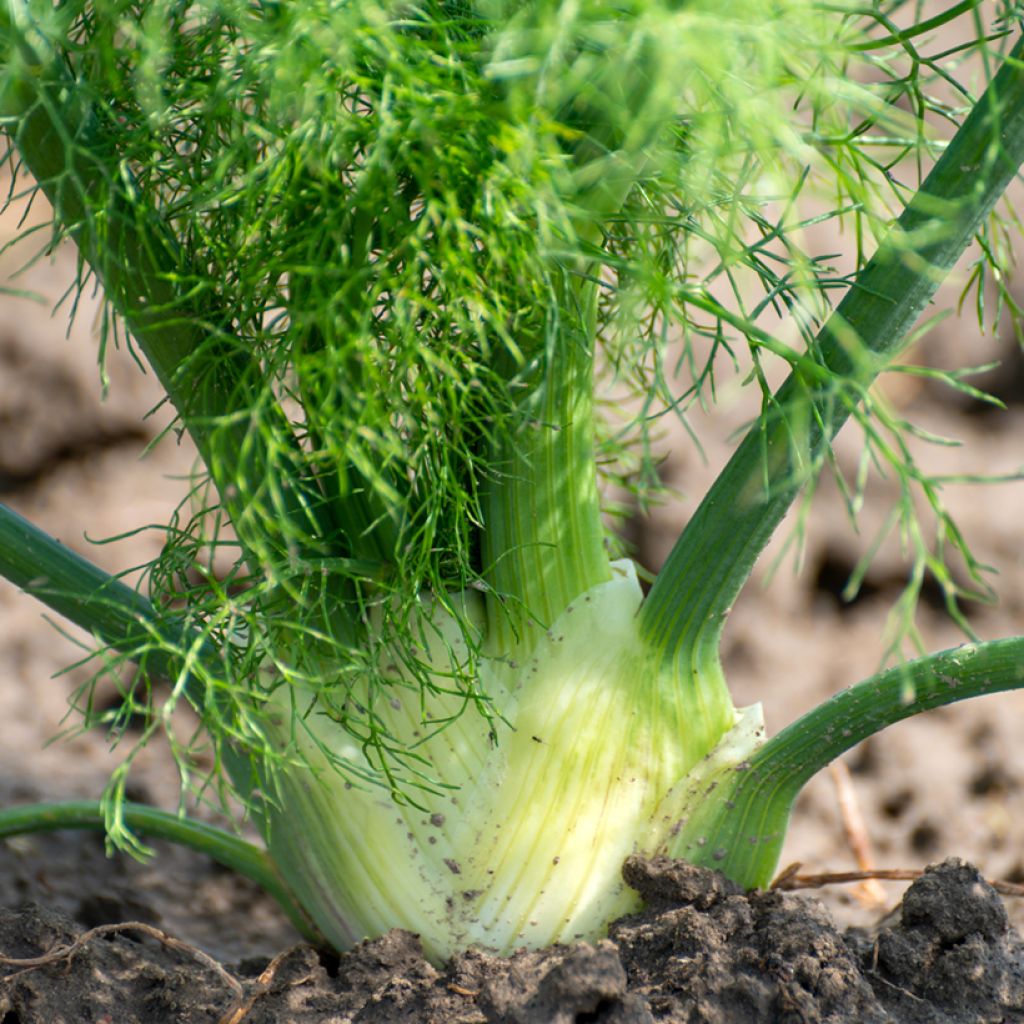

Foeniculum dulce de Florence
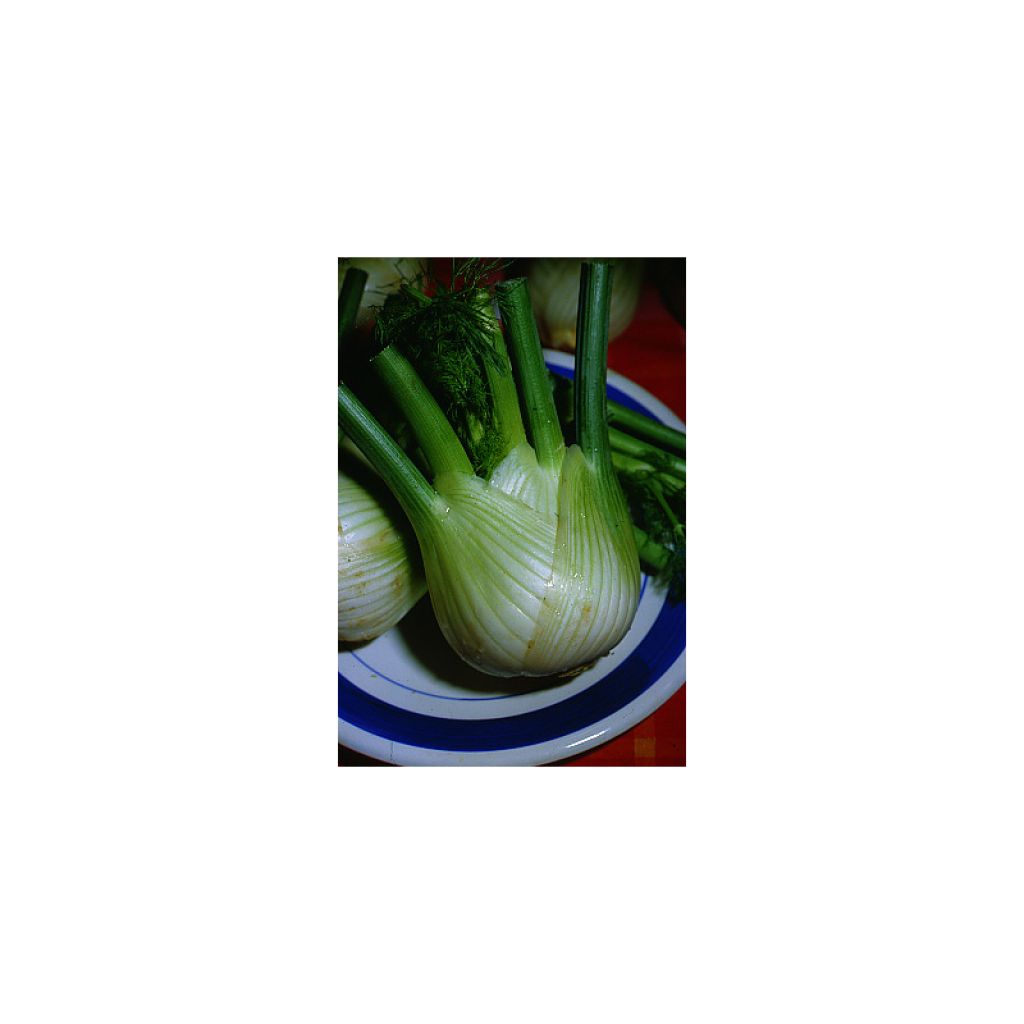

Foeniculum dulce de Florence
Foeniculum dulce de Florence
Foeniculum dulce de Florence
Sweet Fennel, Florence Fennel
Great for the vegetable garden.
Ycel(lesjardins), 21/10/2024
This item cannot be shipped to the selected country
Dispatch by letter from €3.90
More information
Schedule delivery date,
and select date in basket
This plant carries a 6 months recovery warranty
More information
We guarantee the quality of our plants for a full growing cycle, and will replace at our expense any plant that fails to recover under normal climatic and planting conditions.
Seed-only orders are dispatched by sealed envelope. The delivery charge for seed-only orders is €3.90.

Description
A traditional variety, relatively late, which forms beautiful round bulbs, pearly white with a delicate aniseed flavour. It is well suited to southern regions. The sowing period extends from March to June for a harvest from July to October.
Like Carrot and Dill, Fennel belongs to the Apiaceae family (formerly Umbelliferae) and forms a beautiful plant with delicate and light foliage, of which both the branches, the "bulb", and the seeds are consumed. It prefers mild climates and is cultivated in sunny, reasonably rich soil.
Although easy to grow, Fennel is one of those very reactive plants that need a minimum of warmth to grow but do not tolerate drought episodes well, which cause it to quickly go to seed. The gardener's art then consists in combining the right variety and sowing period.
The "bulbs" (which are not bulbs, this fleshy part being formed by the imbrication of the petioles) of Fennel have a beautiful pearly white colour and a slight aniseed flavour. It is a vegetable with a delicate flavour that can be consumed raw or cooked. Its branches are notably used to flavour fish dishes. Finally, if, unfortunately, some plants go to seed, console yourself; fennel seeds are said to aid digestion.
Harvest: Fennel is harvested about three months after sowing and is done as needed.
Storage: It is a rather frost-sensitive plant that cannot withstand freezing. It cannot remain in the ground during winter and should be stored in a cellar. Freshly harvested, Fennel can be stored for a few days in the refrigerator or several months in the freezer after being blanched beforehand.
Gardener's tip: To limit watering, starting from the end of May, we recommend mulching the soil with thin successive layers of clippings, if possible, mixed with dead leaves. This protection, which keeps the soil moist, also reduces weed growth.
Report an error about the product description
Harvest
Plant habit
Foliage
Botanical data
Foeniculum
dulce
de Florence
Apiaceae
Sweet Fennel, Florence Fennel
Cultivar or hybrid
Annual
Other Herb seeds
Planting and care
Sowing:
Fennel germination occurs at a minimum temperature of 12°C (53.6°F). Germination generally takes between 8 and 10 days. The sowing period extends from March to June for a harvest from July to October.
Sowing can be done as early as March under cover, in terrines filled with good sowing compost, or from April to May directly in well-warmed soil. The seeds are buried to a depth of 1 cm (0in) and sown 5 cm (2in) apart in rows spaced 40 cm (16in) apart. One month after germination, it is necessary to thin out the seedlings, keeping only one plant every 15 to 20 cm (6 to 8in).
If the sowing was done in a nursery, the plants will need to be "dressed" (part of the foliage is cut) before being transplanted to the garden, respecting the exact planting distances for sowing (15 to 20 cm (6 to 8in) between plants in rows spaced 40 cm (16in) apart).
Cultivation:
Fennel thrives in sunny, humus-rich soil. If compost is needed, it is best applied in autumn in the form of well-rotted compost (around 3 kg per m2) by raking it to a depth of 5 cm (2in) after loosening the soil as you would for any vegetable crop.
To obtain nice white bulbs, fennel can be earthed up to a height of 15 cm (6in).
Fennel is not a good companion in the vegetable garden and only gets along well with celery.
Don't hesitate to let some plants flower; like all umbellifers, they are lovely and particularly appreciated by beneficial insects.
Seedlings
Care
Intended location
-
, onOrder confirmed
Reply from on Promesse de fleurs
Vegetable seeds
Haven't found what you were looking for?
Hardiness is the lowest winter temperature a plant can endure without suffering serious damage or even dying. However, hardiness is affected by location (a sheltered area, such as a patio), protection (winter cover) and soil type (hardiness is improved by well-drained soil).

Photo Sharing Terms & Conditions
In order to encourage gardeners to interact and share their experiences, Promesse de fleurs offers various media enabling content to be uploaded onto its Site - in particular via the ‘Photo sharing’ module.
The User agrees to refrain from:
- Posting any content that is illegal, prejudicial, insulting, racist, inciteful to hatred, revisionist, contrary to public decency, that infringes on privacy or on the privacy rights of third parties, in particular the publicity rights of persons and goods, intellectual property rights, or the right to privacy.
- Submitting content on behalf of a third party;
- Impersonate the identity of a third party and/or publish any personal information about a third party;
In general, the User undertakes to refrain from any unethical behaviour.
All Content (in particular text, comments, files, images, photos, videos, creative works, etc.), which may be subject to property or intellectual property rights, image or other private rights, shall remain the property of the User, subject to the limited rights granted by the terms of the licence granted by Promesse de fleurs as stated below. Users are at liberty to publish or not to publish such Content on the Site, notably via the ‘Photo Sharing’ facility, and accept that this Content shall be made public and freely accessible, notably on the Internet.
Users further acknowledge, undertake to have ,and guarantee that they hold all necessary rights and permissions to publish such material on the Site, in particular with regard to the legislation in force pertaining to any privacy, property, intellectual property, image, or contractual rights, or rights of any other nature. By publishing such Content on the Site, Users acknowledge accepting full liability as publishers of the Content within the meaning of the law, and grant Promesse de fleurs, free of charge, an inclusive, worldwide licence for the said Content for the entire duration of its publication, including all reproduction, representation, up/downloading, displaying, performing, transmission, and storage rights.
Users also grant permission for their name to be linked to the Content and accept that this link may not always be made available.
By engaging in posting material, Users consent to their Content becoming automatically accessible on the Internet, in particular on other sites and/or blogs and/or web pages of the Promesse de fleurs site, including in particular social pages and the Promesse de fleurs catalogue.
Users may secure the removal of entrusted content free of charge by issuing a simple request via our contact form.
The flowering period indicated on our website applies to countries and regions located in USDA zone 8 (France, the United Kingdom, Ireland, the Netherlands, etc.)
It will vary according to where you live:
- In zones 9 to 10 (Italy, Spain, Greece, etc.), flowering will occur about 2 to 4 weeks earlier.
- In zones 6 to 7 (Germany, Poland, Slovenia, and lower mountainous regions), flowering will be delayed by 2 to 3 weeks.
- In zone 5 (Central Europe, Scandinavia), blooming will be delayed by 3 to 5 weeks.
In temperate climates, pruning of spring-flowering shrubs (forsythia, spireas, etc.) should be done just after flowering.
Pruning of summer-flowering shrubs (Indian Lilac, Perovskia, etc.) can be done in winter or spring.
In cold regions as well as with frost-sensitive plants, avoid pruning too early when severe frosts may still occur.
The planting period indicated on our website applies to countries and regions located in USDA zone 8 (France, United Kingdom, Ireland, Netherlands).
It will vary according to where you live:
- In Mediterranean zones (Marseille, Madrid, Milan, etc.), autumn and winter are the best planting periods.
- In continental zones (Strasbourg, Munich, Vienna, etc.), delay planting by 2 to 3 weeks in spring and bring it forward by 2 to 4 weeks in autumn.
- In mountainous regions (the Alps, Pyrenees, Carpathians, etc.), it is best to plant in late spring (May-June) or late summer (August-September).
The harvesting period indicated on our website applies to countries and regions in USDA zone 8 (France, England, Ireland, the Netherlands).
In colder areas (Scandinavia, Poland, Austria...) fruit and vegetable harvests are likely to be delayed by 3-4 weeks.
In warmer areas (Italy, Spain, Greece, etc.), harvesting will probably take place earlier, depending on weather conditions.
The sowing periods indicated on our website apply to countries and regions within USDA Zone 8 (France, UK, Ireland, Netherlands).
In colder areas (Scandinavia, Poland, Austria...), delay any outdoor sowing by 3-4 weeks, or sow under glass.
In warmer climes (Italy, Spain, Greece, etc.), bring outdoor sowing forward by a few weeks.

































